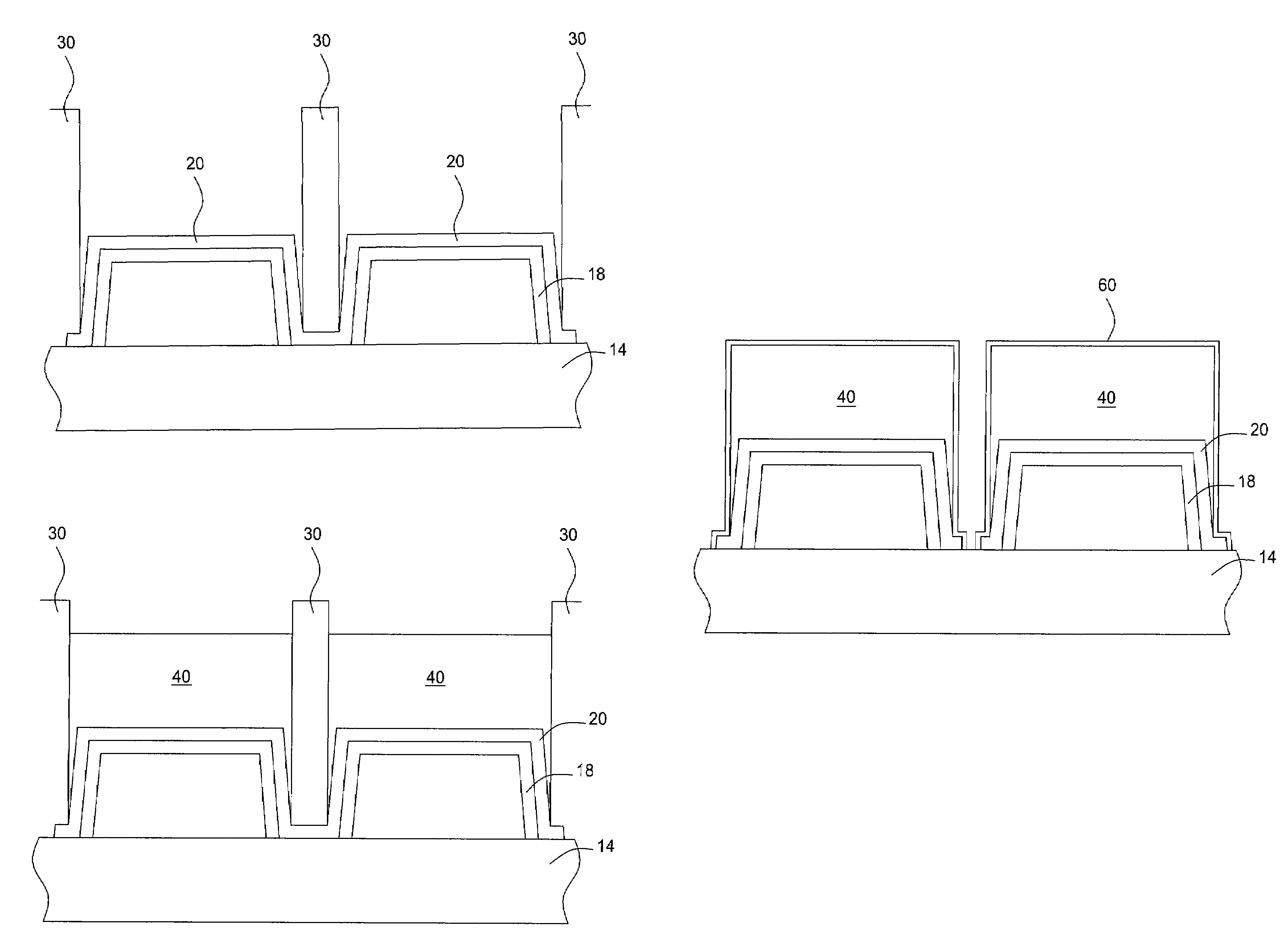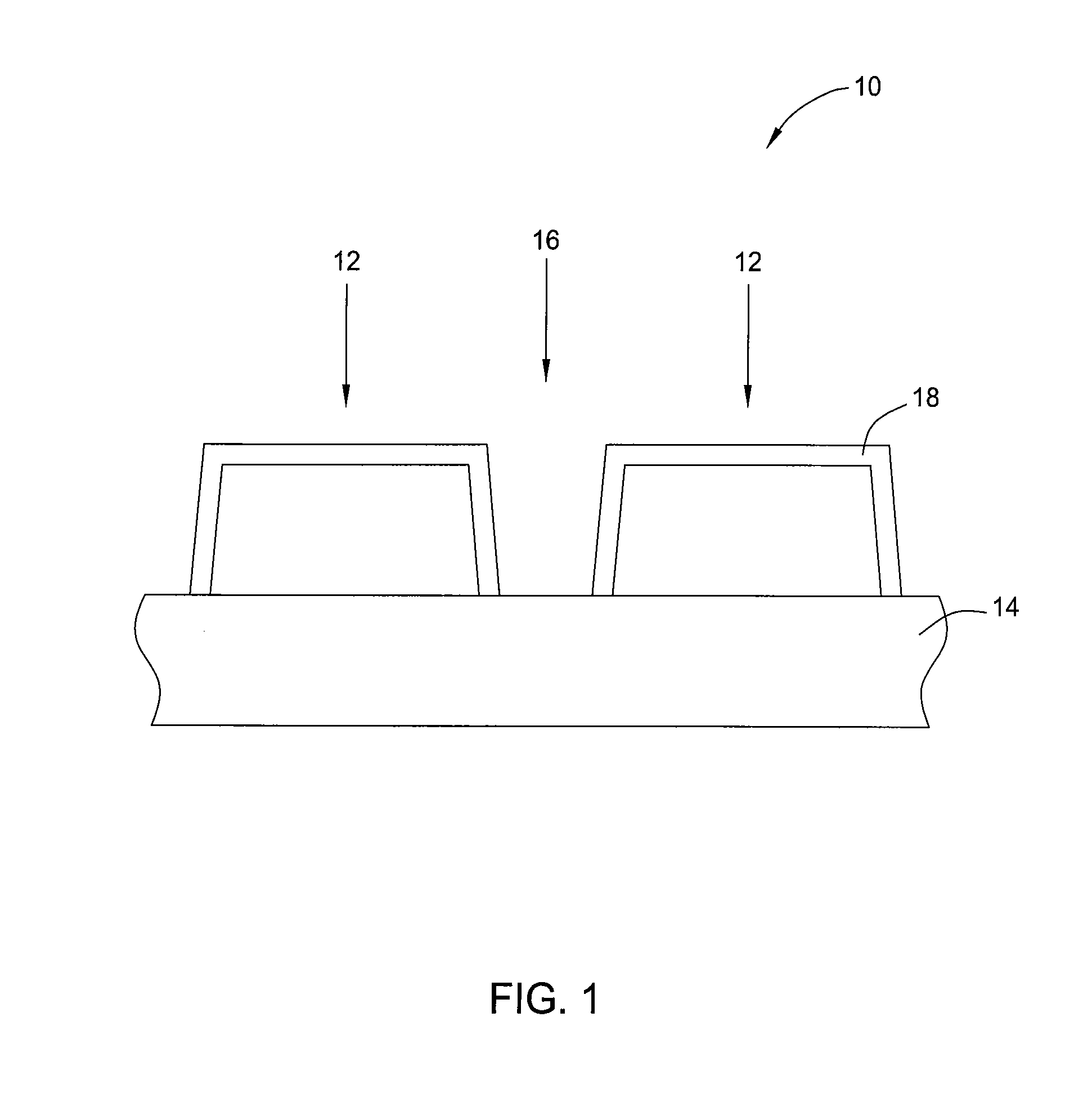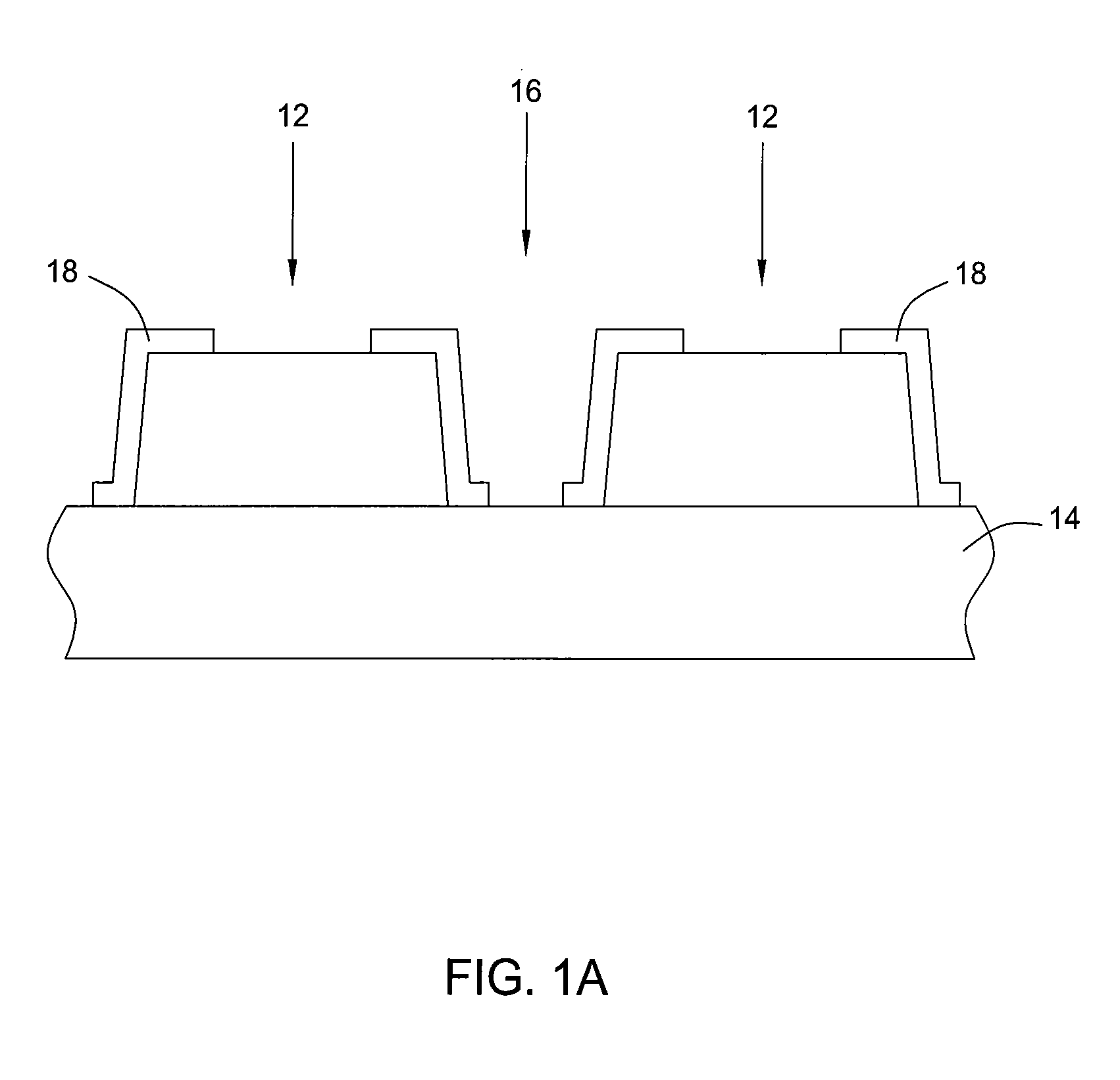Method of separating semiconductor dies
a technology of semiconductor dies and dies, applied in the direction of semiconductor devices, basic electric elements, electrical equipment, etc., can solve the problems of presenting a challenge to the device handling during the separation process or in preparation of separation
- Summary
- Abstract
- Description
- Claims
- Application Information
AI Technical Summary
Benefits of technology
Problems solved by technology
Method used
Image
Examples
Embodiment Construction
[0034]Embodiments of the present invention provide techniques and structures useful for separating multiple semiconductor dies present on a wafer. This method can be applied to any semiconductor wafer with multiple dies, and the case of separating multiple vertical light-emitting diode (VLED) dies is provided as an example. In the figures that follow, only two dies are shown, but this is representative of multiple dies on the entire wafer.
An Exemplary Method of Separating Semiconductor Dies
[0035]Referring now to FIG. 1, a generic multilayered semiconductor structure 10 is provided with two different dies 12 disposed on a substrate 14 and separated by a street section, or simply “the street”16. A passivation layer 18 may be deposited on the dies 12 with a portion of the passivation layer 18 removed as desired (e.g. for contact or grounding) for some embodiments as shown in FIG. 1A. The substrate 14 on which the dies 12 were formed may be composed of SiO2, sapphire, GaAs, InP, InGaAsP...
PUM
| Property | Measurement | Unit |
|---|---|---|
| thickness | aaaaa | aaaaa |
| thickness | aaaaa | aaaaa |
| thickness | aaaaa | aaaaa |
Abstract
Description
Claims
Application Information
 Login to View More
Login to View More - R&D
- Intellectual Property
- Life Sciences
- Materials
- Tech Scout
- Unparalleled Data Quality
- Higher Quality Content
- 60% Fewer Hallucinations
Browse by: Latest US Patents, China's latest patents, Technical Efficacy Thesaurus, Application Domain, Technology Topic, Popular Technical Reports.
© 2025 PatSnap. All rights reserved.Legal|Privacy policy|Modern Slavery Act Transparency Statement|Sitemap|About US| Contact US: help@patsnap.com



